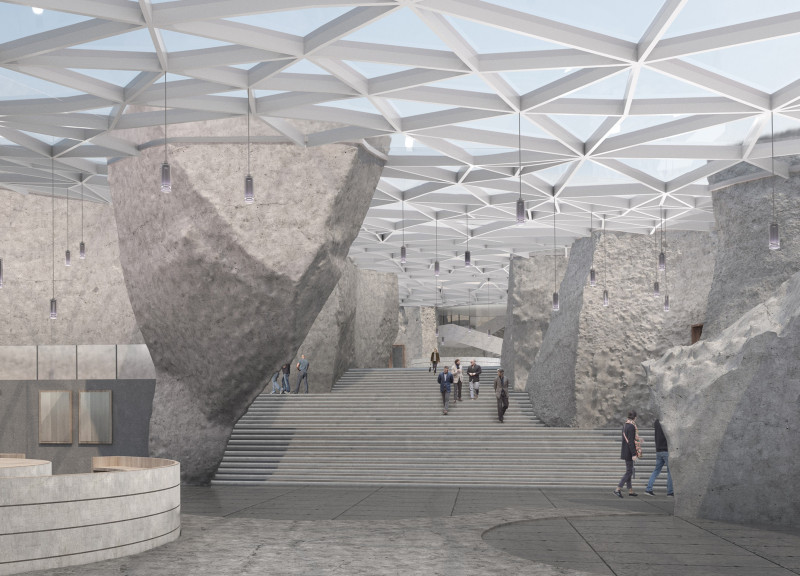5 key facts about this project
The Volcano Hverfjall Museum is located 3 kilometers from Hverfjall volcano in Iceland. It is dedicated to exploring the cultural, natural, and geological aspects of the area. The design emphasizes open spaces, maximizing natural light while using thick walls that reflect the region's geological features. This connection between architecture and landscape enhances the visitor experience.
Spatial Organization
The museum is organized around thirty unique tectons that create a series of interconnected spaces. An inclined pathway leads visitors from the road to a spacious main hall characterized by a high ceiling that enhances the volume of the space. This central hall accommodates various functions, guiding visitors to two main areas: the museum section and the office-recreation zone.
Functional Dynamics
The primary hall supports a range of activities, from exhibitions to community events. A set of stairs leads to observation platforms that frame views of the surrounding landscape. This layout allows visitors to move through the museum in a natural way, encouraging exploration. Each area is designed to offer a unique experience while remaining cohesive.
Material Integration
Volcanic ash is used in the concrete mix, substituting for traditional cement. This choice is environmentally friendly and contributes to the material’s durability. The performance of the concrete is particularly important in Iceland’s varied climate. By using local volcanic ash, the building connects to its geological context, further enhancing its educational role.
Visitor Experience
The museum features cylindrical alcoves that capture natural light, creating inviting spaces for visitors. In contrast, rectangular rooms are equipped to use artificial lighting, ensuring flexibility for different activities. This thoughtful combination of light and space encourages visitors to engage meaningfully with both the exhibits and the landscape around them.
The parking structure is set in a pit, designed to be unobtrusive and maintain the visual integrity of the site. This design choice prioritizes ease of access for visitors while respecting the natural surroundings.





















































